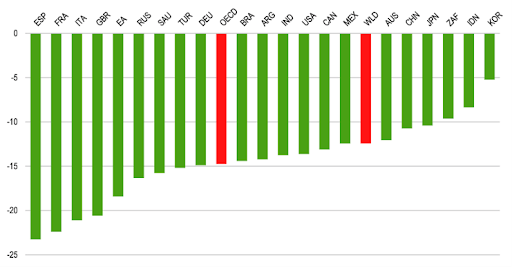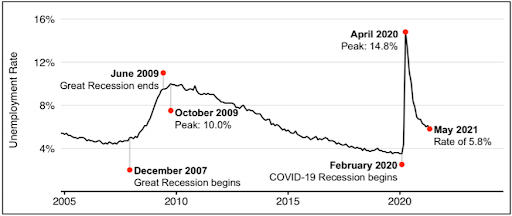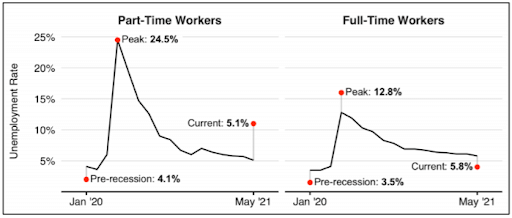Supervised by: Fidelia Hein, BSc. Fidelia holds a Bachelor of Science in International Business from Reutlingen University. She is currently completing her MBA degree at the University of Oxford Saïd Business School. Prior to starting her MBA degree, Fidelia was a business manager at the multinational corporation Olympus Surgical Technologies Europe.
The COVID-19 pandemic that has been sweeping the nations of the world has changed our lives in a very drastic way.
On 31 December 2019, the first case of coronavirus was identified in Wuhan City, China. Since then, the virus has spread. On 7 January 2020, the virus was temporarily named 2019-nCoV. Coronaviruses in general are a large family of viruses that cause symptoms ranging from the common cold to very severe respiratory disease. The virus attacks the body, most commonly by attacking a person’s lungs, but it can also cause inflammation throughout the whole body by creating an overactive immune response. The symptoms can appear between 2 and 14 days after being in contact with the virus. Some of the symptoms include fever, cough, shortness of breath, fatigue, muscle or body aches, headache, new loss of taste or smell, a sore throat, congestion, runny nose, nausea, vomiting and diarrhea. This virus is spread through person-to-person contact and has resulted in the deaths of millions of people globally. According to John Hopkins University data, at the time of writing this paper, 192.5 million cases of infection have been reported and 4.12 million people have died across the world. Recently, COVID-19 has mutated into an easily transmitted variant called Delta which is said to be more dangerous and deadly.
This pandemic affects not only our personal lives but our means of livelihood, with the transportation of goods and services largely suspended. Due to its rapid and contagious nature, the COVID-19 pandemic has affected every form of lifestyle. It has left thousands of people undernourished and in poverty, especially in developing countries and among low-income earners. The World Health Organization (WHO) estimated that the 690 million undernourished people worldwide could increase by another 132 million by the end of 2020 due to the effects of the pandemic.
COVID-19 affected international trade in so many ways. International trade involves the movement of goods and services around the world. Since the beginning of the pandemic, COVID-19 has impacted the exportation of food and so its consumption around the world due to the restrictions on trade. “In a global health crisis like this, trade is essential to save lives and livelihoods” (Organization for Economic Co-operation and Development 2020). The restrictions also affected day to day living, how companies and factories operated and the economy in general. For instance, in the construction industry the impact was felt immediately when the pandemic hit. Supplies to construction companies were stopped suddenly and construction workers were limited in their ability to carry on with construction (Marsh McLennan n.d.).
Trade is especially important for the recovery from the global pandemic. Studies have shown that, since the pandemic started, there has been an almost 13% decline in global Gross Domestic Product (GDP), as shown in figure 1.

Figure 1: Collapse happening in first half of 2020 (Organization of Economic Co-operation and Development).
One other effect is that there has been a gradual increase of certain products needed, meaning many factories experienced an increase in demand but could not meet the supply of the products. For example, before the pandemic, doctors and surgeons used masks as standard clinical practice. Now, in order to reduce the spread of COVID-19, the general population is also encouraged to wear masks, which has increased the demand for the product and created a shortage. Also, the worldwide demand for the COVID-19 vaccine, which is necessary to prevent the infection of the virus, has put a great demand on the manufacturers.
According to the article titled ‘Unemployment Rates During the COVID-19 Pandemic’, published by the US Congressional Research Service (CRS), another effect of the pandemic is that some companies started a work from home policy, due to the need to reduce crowding in offices. Data from an article by IEEE Spectrum states that, in the IT industry, companies have embraced remote working and will continue to even after COVID-19. Tata Consultancy Service, which is one of India’s largest IT companies, is expected to have 75% of its 450,000 employees work from home. COVID-19 has and will continue to accelerate the trend of remote working. As millions start to accomplish work-related tasks from home, it will drastically affect work creativity, productivity, and innovation. Virtual teams have been in play since before the pandemic started, but they will now play a much greater role in accomplishing a company or organization’s goal, whether it be synchronous or asynchronous. Many small to medium sized tech companies are not ready for the change to remote working as they do not have the understanding or requirements needed to make the switch. When it comes to any type of teamwork there are bound to be conflicts and problems with collaboration and cooperation that can advance very quickly. Some ways to deescalate problems before they start are planning and executing mandatory team building exercises. By doing these exercises, team members will learn to work with each other and form emotional attachments to each other.
This innovation of working from home has resulted in some of the workforce being laid off, which has escalated the rate of unemployment worldwide. The unemployment rate during the last financial crisis in December 2007 went from 5% to 9.5% in June 2009. By April 2020, there had been a 14.8% increase in unemployment rates as shown in figure 2.

Figure 2: US Unemployment Rate (Congressional Research Service)
Part-time workers experienced a higher peak unemployment rate (24.5% in April 2020) than full-time workers (12.8% in April 2020,) as shown in Figure 3. (Unemployment Rates During the COVID-19 Pandemic 2021).

Figure 3: Unemployment Rates for Part- and Full-Time Workers (Congressional Research Service)
Informal economy workers are particularly vulnerable because the majority lack social protection and access to quality healthcare and have lost access to productive assets (WHO 2020). For most families, no or reduced income means difficulty affording food and resources.
Another significant effect of the pandemic relates to border closures and trade restrictions. Farmers have been prevented from accessing the market so they cannot sell their crops, for instance. Some farmers make less products than others, so the pandemic has hit them harder. Agricultural workers like farmers are important because they help feed the world’s population. They are vulnerable because they struggle to access government aid.
With regards to trade restrictions, countries all over the world have been imposing temporary export restrictions due to the pandemic. According to the WTO, about 90% of export bans have been trade restrictions (CRS 2020). The founding members of the WTO are Australia, Belgium, Brazil, Burma, Canada, Ceylon, Chile, China, Cuba, Czechoslovakia, France, India, Lebanon, Luxembourg, the Netherlands, New Zealand, Norway, Pakistan, Southern Rhodesia, Syria, South Africa, the United Kingdom, and the United States. The WTO is usually very malleable when it comes to the usage of trade restrictions. The one condition they have when allowing trade restrictions is that said restrictions must be specific, temporary, and transparent. Article XI of the 1994 General Agreement on Tariffs and Trade or the GATT broadly prohibits export bans and restrictions, other than duties, taxes, or other charges (CRS 2021). They would only allow this temporary solution in case a country had a critically important emergency of food or other essential products or supplies. In essence, border closure and export restrictions are consequences of the pandemic, which has implications on international trade.
In conclusion, COVID-19 has affected the way companies and factories make their products, how many people they have in their workforce and how many people get laid off. Some companies, for example those in the business of making vaccines, are now struggling to meet global manufacture demand. It has also affected export restrictions and has tested the limits of the World Trade Organization’s rules and regulations. I personally believe that living through COVID-19 has taught us how surviving a pandemic can change almost every aspect in your life.
Bibliography
WHO. (2020). Impact of COVID-19 on people’s livelihoods, their health and our food systems https://www.who.int/news/item/13-10-2020-impact-of-covid-19-on-people’s-livelihoods-their-health-and-our-food-systems [accessed July 20th, 2021]
CRS. (2021). Unemployment Rates During COVID-19 Pandemic https://crsreports.congress.gov/product/pdf/R/R46554 [accessed July 20th, 2021]
CRS. (2021). Export Restrictions in Response to COVID-19 Pandemic https://crsreports.congress.gov/product/pdf/IF/IF11551 [accessed July 20th, 2021]
Cornell SC Johnson College of Business. (2020). COVID-19’s impact on work, workers, and the workplace of the future https://business.cornell.edu/hub/2020/09/25/covid-19s-impact-work-workers-workplace-future/ [accessed July 20th, 2021]
OECD. (2020). COVID-19 and international trade: Issues and actions https://www.oecd.org/coronavirus/policy-responses/covid-19-and-international-trade-issues-and-actions-494da2fa/ [accessed July 13th, 2021
Marsh Mclennan. Five Ways COVID-19 Has Impacted Construction Companies https://www.marsh.com/us/insights/research/five-ways-covid-19-has-impacted-construction-companies.html [accessed July 22nd, 2021]
IEEE Spectrum. 2021. How COVID-19 Changed the Way IT Companies Work https://spectrum.ieee.org/at-work/tech-careers/how-the-covid19-pandemic-changed-the-way-it-companies-work g[accessed July 22nd, 2021]
MD India. 2021. Global Cases Reach 192.5 Millions https://www.medindia.net/news/global-covid-19-cases-reach-1925-million-202400-1.htm [accessed July 23rd, 2021]




